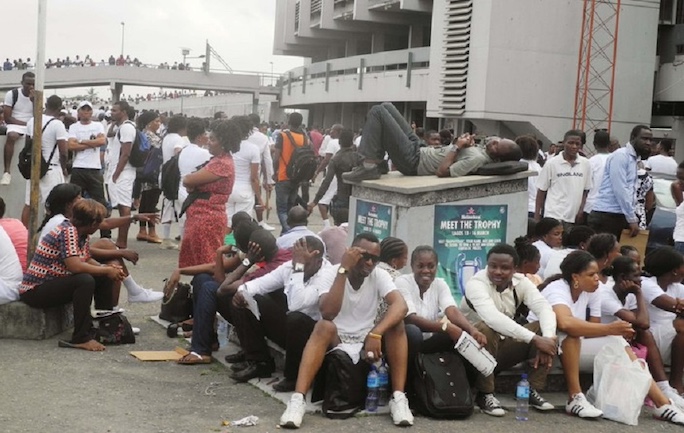Nigeria’s unemployment rate climbed to 5.3% in the first quarter of 2024, up from 5% in the last quarter of 2023, according to the National Bureau of Statistics (NBS). The Nigeria Labour Force Statistics Report for Q1 2024 revealed that unemployment among individuals with post-secondary education stood at 9%, while youth unemployment (ages 15-24) was 8.4%, a slight decrease from 8.6% in Q3 2023.
The report also highlighted that urban unemployment remained steady at 6%, while time-related underemployment decreased to 10.6%, down from 12.3% in Q3 2023.
Impact on the Labour Force and Employment
According to the NBS, 4.5% of the working-age population continues to be engaged in subsistence agriculture. The employment-to-population ratio fell to 73.2%, down from 75.6% in the previous quarter. The ratio in urban areas was 69.5%, while in rural areas it was 78.9%.
Wage employment showed some improvement, rising to 16% in Q1 2024, up from 12.7% in Q4 2023. The proportion of men in wage employment was higher at 20.1%, compared to 12.1% for women. In urban areas, wage employment was 21.8%, compared to 8.1% in rural areas.
Labour Force Participation Declines
The labour force participation rate also declined to 77.3% in Q1 2024, down from 79.5% in Q3 2023. The combined unemployment and time-related underemployment rate decreased to 15.3%, from 17.3% in the previous quarter.
Notably, the percentage of youth not in education, employment, or training (NEET rate) rose to 14.4%, a 0.7% increase from previous figures.
Annual Labour Force Statistics
The 2023 Annual Nigeria Labour Force Survey reported that the working-age population stood at 116.6 million, with women making up 52% and men 48%. The national unemployment rate for 2023 was 5.4%, with Abia State recording the highest unemployment at 18.7% and Nasarawa the lowest at 0.5%.
The report also showed that unemployment was highest among those with post-secondary education (9.4%), followed by individuals with secondary education (6.7%), and primary education (4.1%). The lowest unemployment rate (3.2%) was recorded among those with no formal qualifications.
Time-related underemployment in 2023 was 11.1%, with men at 8.3% and women at 13.4%. Plateau State had the highest underemployment at 33.9%, while Nasarawa had the lowest at 0.3%.
Informal Employment Dominates
In 2023, 77.6 million Nigerians were engaged in informal employment, accounting for 92.2% of the employed population. Kano had the largest number of informal workers, with 5.2 million, followed by Lagos, which had 4.6 million informal workers (excluding agriculture).
The employment-to-population ratio in 2023 was 72.2%, with rural areas reporting a higher ratio (77.3%) compared to urban areas (68.7%). Bauchi State led with an 88.4% employment-to-population ratio, while Rivers State had the lowest at 55.7%.
The NBS report underscores the ongoing challenges in Nigeria’s labour market, particularly in addressing youth unemployment and underemployment in both rural and urban areas.
